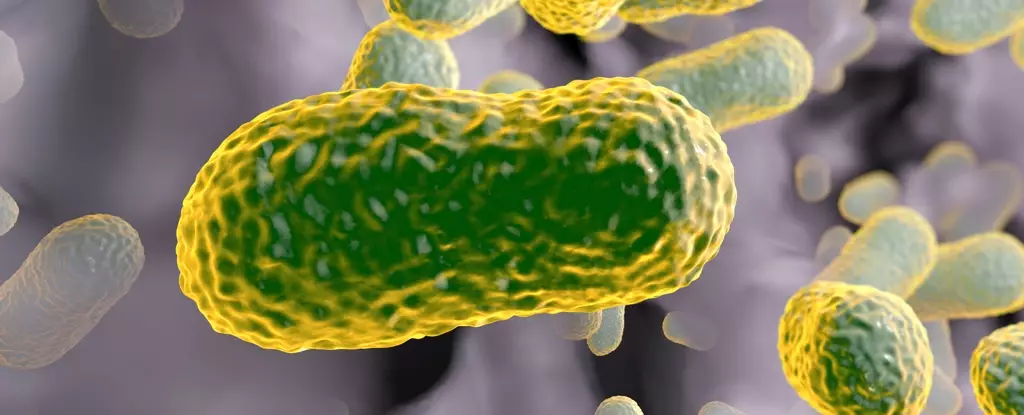The ongoing battle against drug-resistant bacteria poses one of the most significant challenges to public health in modern medicine. Though antibiotics have saved millions of lives since their discovery, the emergence of superbugs—strains of bacteria resistant to multiple drugs—threatens to undermine their effectiveness. A recently reignited interest in a long-abandoned antibiotic known as streptothricin has sparked hope among researchers. Initial assessments of this antibiotic, which dates back to the 1940s, reveal its potential as a formidable adversary against the drug-resistant pathogens identified by the World Health Organization (WHO).
The phenomenon of antibiotic resistance did not appear overnight. The “golden age” of antibiotic discovery, spanning from the 1940s to the 1960s, introduced a plethora of bacterial killers. Streptothricin, a compound that was isolated during this era, initially garnered attention due to its efficacy against gram-negative bacteria. This class of bacteria presents unique challenges due to its dual-membrane structure, which provides them with enhanced protection against a wide range of antibiotics. As more antibiotics are modified derivatives of those developed long ago, researchers are increasingly revisiting these historical compounds to discover unexplored capabilities.
As bacterial strains evolve and develop resistance, the urgency to identify effective treatments intensifies. In 2017, the WHO published a list highlighting the most dangerous antibiotic-resistant bacteria, predominantly comprising gram-negative strains that elude conventional treatments. Despite its prior abandonment—largely due to its toxic effects on human kidney cells—the potential of streptothricin has not faded, and research is now poised to breathe new life into this forgotten drug.
Led by pathologist James Kirby from Harvard University, recent research aims to revive the previously overlooked streptothricin, now dubbed nourseothricin. This revitalized interest emerges in the context of a healthcare emergency, where multi-drug resistant bacteria threaten the efficacy of current treatments. The identification of nourseothricin as a mixture of different antibiotic components, including variants like streptothricin F (S-F) and streptothricin D (S-D), sets the stage for a deeper investigation into their effects.
While some components have demonstrated toxicity towards kidney cells, findings reveal that S-F maintains bacterial lethality without compromising kidney health. In mouse models, researchers observed that S-F could effectively combat strains resistant to existing drugs, showcasing minimal toxicity. This pivotal discovery opens doors to explore the full therapeutic potential of nourseothricin in a clinical setting.
Mechanisms of Action: A New Perspective on Antibiotic Function
The intricacies behind how streptothricin targets gram-negative bacteria are still under investigation. However, early indications suggest that it disrupts protein synthesis in a novel manner, distinguishing it from other medicine classes currently in use. Understanding the biochemical interactions between streptothricins and their bacterial targets may not only reinforce their application as a treatment but also inspire the creation of entirely new antibiotic classes.
The successful isolation of non-toxic variants could revolutionize treatment paradigms for infections that remain resistant to current antibiotics. This has immense implications, not just for patients facing life-threatening infections but also for the broader healthcare system plagued by rising costs associated with prolonged illnesses and ineffective antibiotics.
The Future of Antibiotic Research
The case of nourseothricin exemplifies an essential trend in the pharmaceutical industry—returning to drugs that have been shelved due to initial setbacks. With the understanding of antibiotic pathways and mechanisms evolving, researchers are optimistic that revisiting these compounds can yield substantial breakthroughs against resistant bacteria. Enhanced efforts in drug modification and innovation could facilitate the development of robust antibacterial agents capable of halting the superbug threat.
The rekindling of interest in streptothricin as nourseothricin marks a significant milestone in the ongoing war against antibiotic resistance. The scientific community’s renewed focus on historical compounds could well lay the foundation for effective strategies to not only combat current drug-resistant strains but also prepare for potential emerging threats in the future. As research progresses, the hope is that nourseothricin will emerge as a cornerstone in the next generation of antibiotics, safeguarding global health for years to come.


Leave a Reply